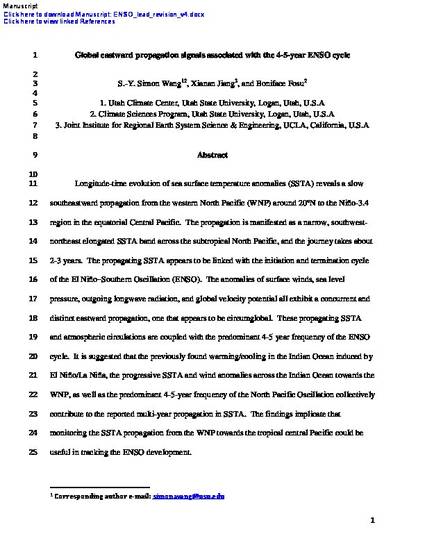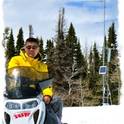
Longitude-time evolution of sea surface temperature anomalies (SSTA) reveals a slow southeastward propagation from the western North Pacific (WNP) around 20°N to the Niño-3.4 region in the equatorial Central Pacific. The propagation is manifested as a narrow, southwest-northeast oriented SSTA band across the subtropical North Pacific, and its journey takes about 2–3 years. The propagating SSTA appears to engage the initiation of the El Niño–Southern Oscillation (ENSO). The anomalies of surface winds, sea level pressure, outgoing longwave radiation, and velocity potential all exhibit a concurrent and distinct eastward propagation, one that appears to be circumglobal and is coupled with the predominant 4–5 year frequency of the ENSO cycle. It is suggested that the previously found warming/cooling in the Indian Ocean induced by El Niño/La Niña, the progressive SSTA and wind anomalies across the Indian Ocean towards the WNP, and the predominant 4–5-year frequency of the North Pacific Oscillation collectively contribute to the reported SSTA propagation . The findings implicate that monitoring the SSTA propagation from the WNP towards the tropical central Pacific could be useful in tracking the ENSO development.
Available at: http://works.bepress.com/shih-yu_wang/96/
